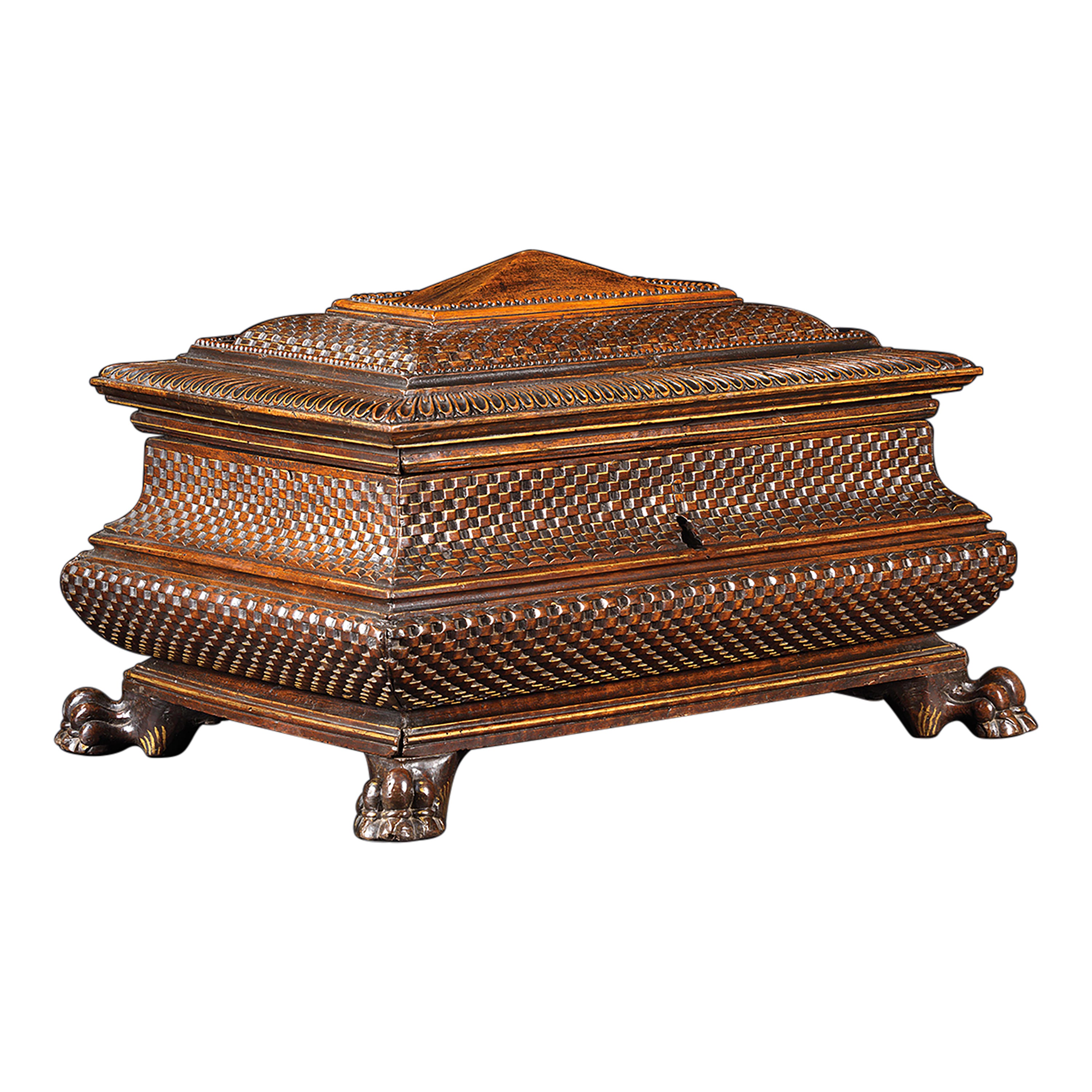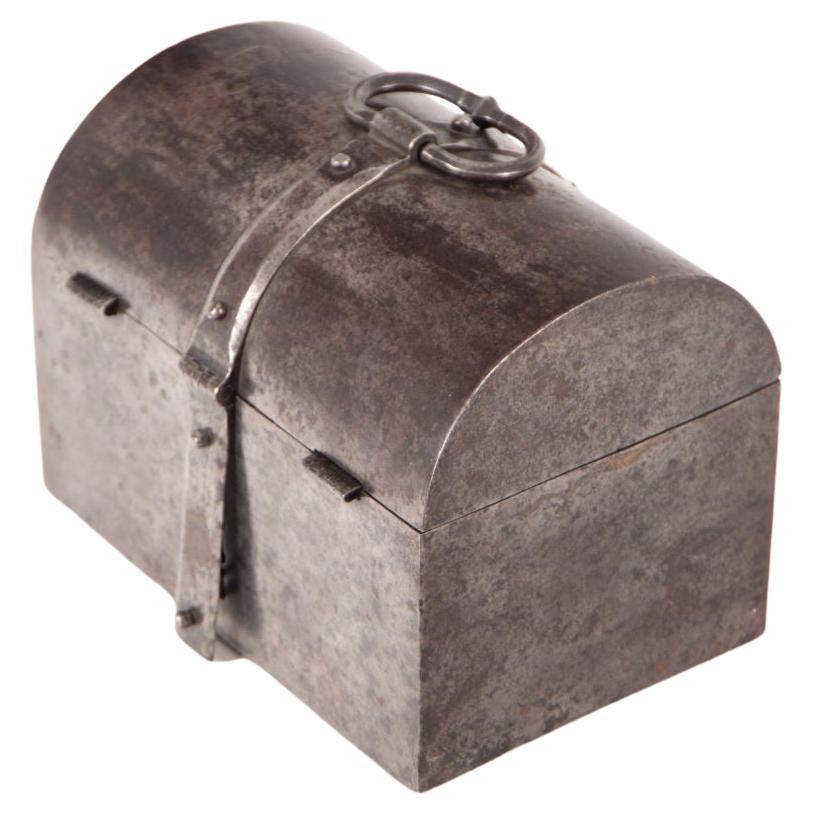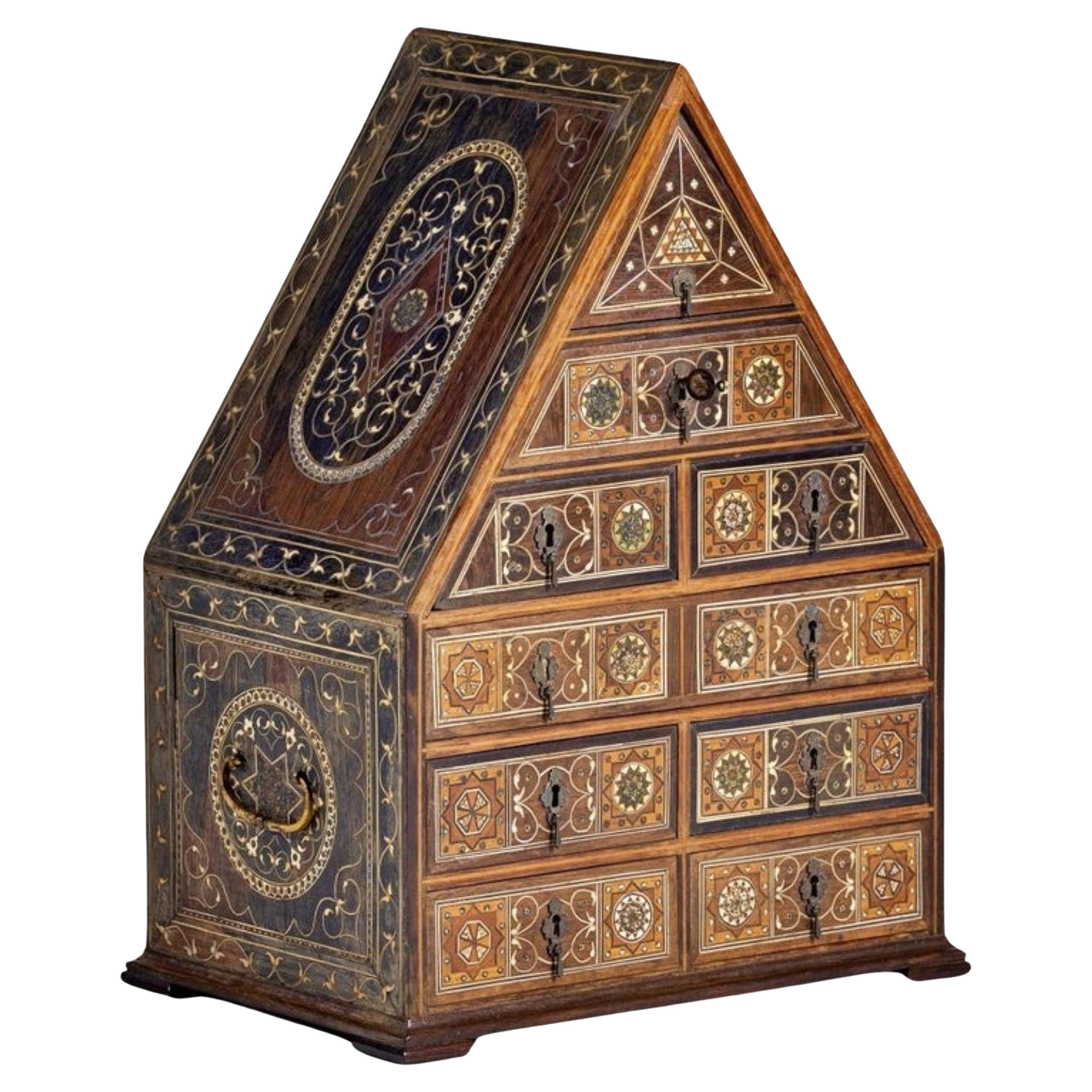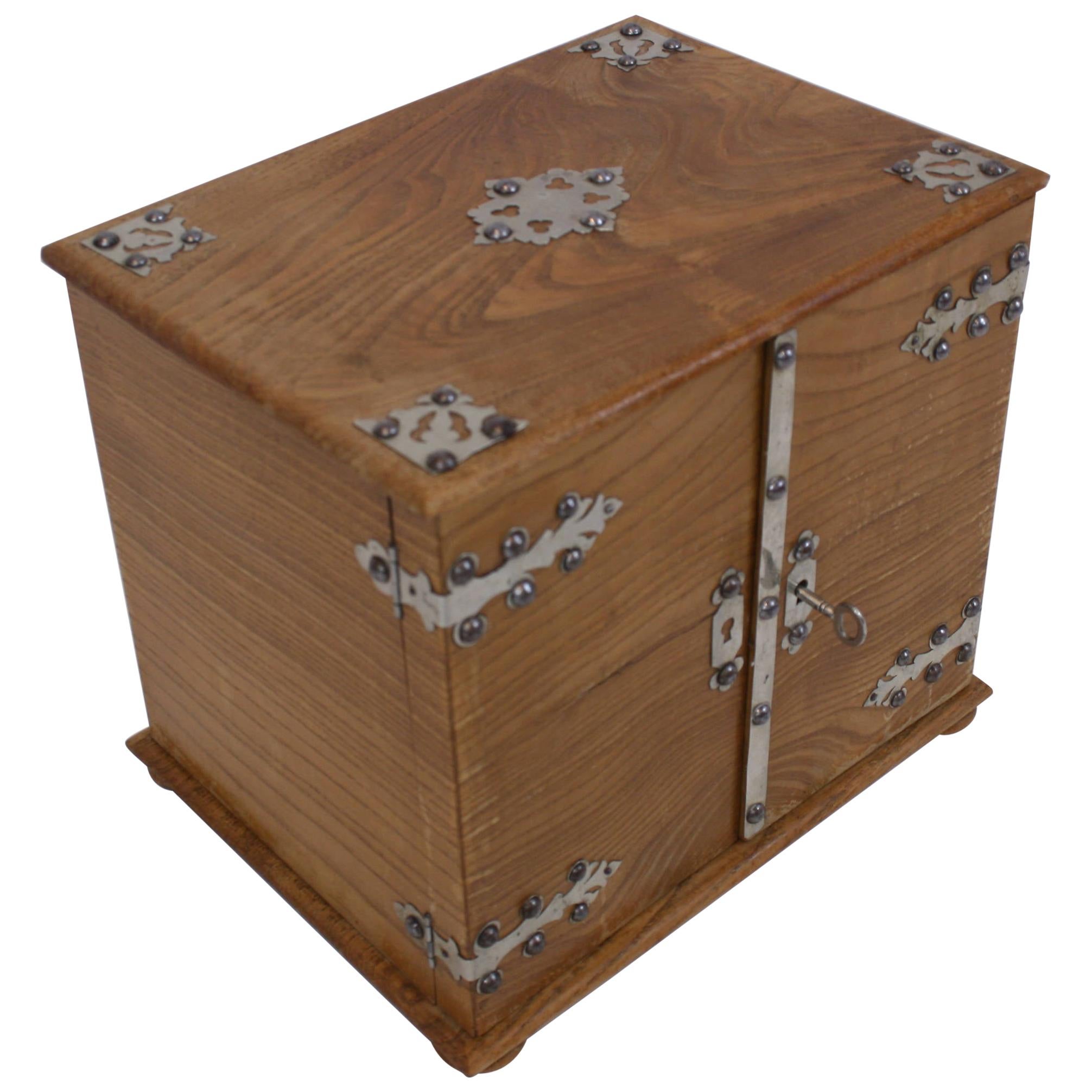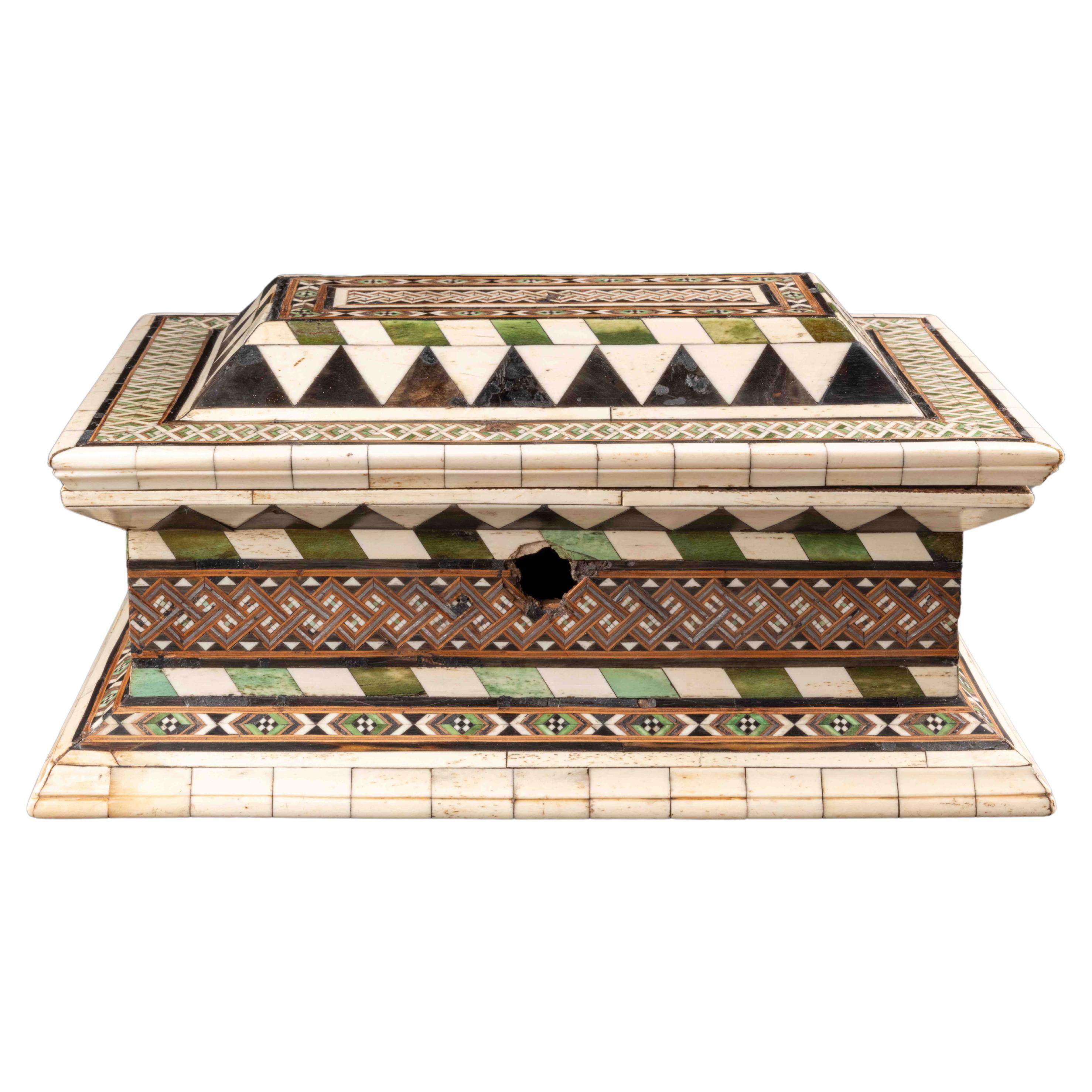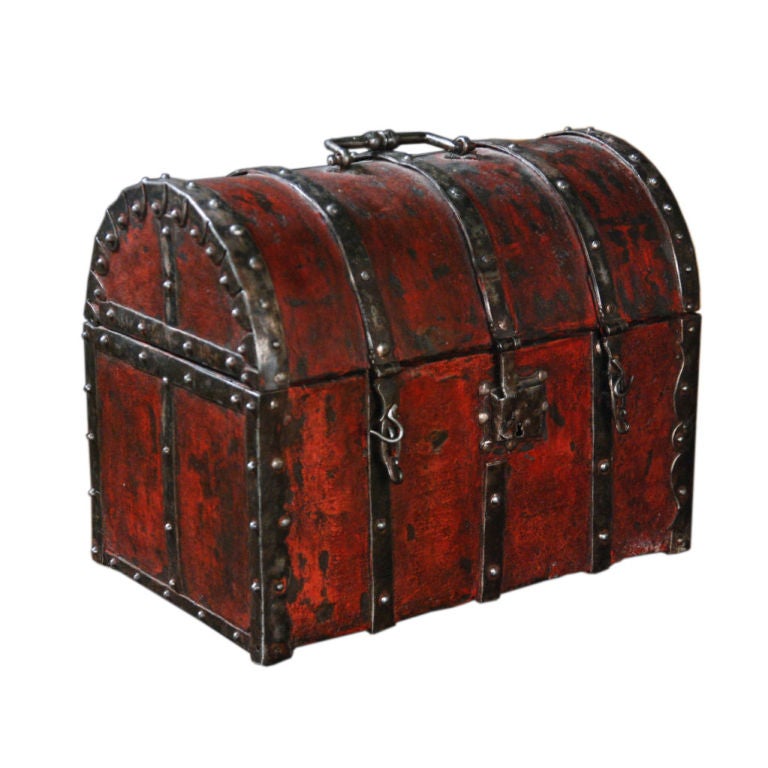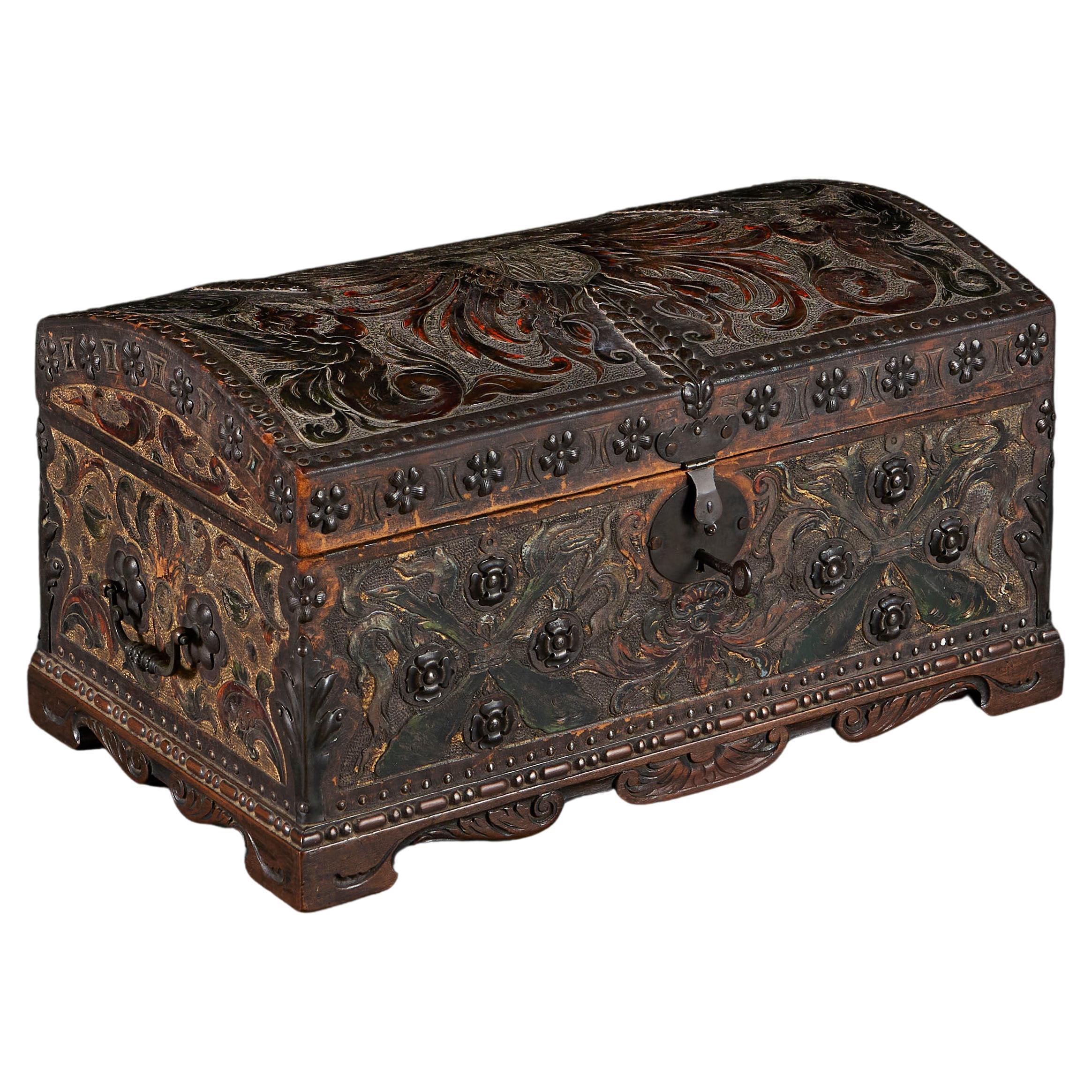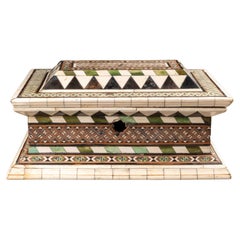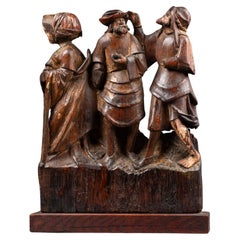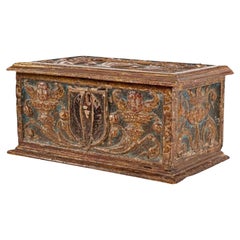
Florentine Leather Casket, 16th Century
View Similar Items
Want more images or videos?
Request additional images or videos from the seller
1 of 5
Florentine Leather Casket, 16th Century
About the Item
- Dimensions:Height: 10.24 in (26 cm)Diameter: 9.45 in (24 cm)
- Style:Renaissance (Of the Period)
- Materials and Techniques:
- Place of Origin:
- Period:
- Date of Manufacture:16th century
- Condition:Wear consistent with age and use.
- Seller Location:Bruxelles, BE
- Reference Number:1stDibs: LU6666234375822
About the Seller
5.0
Vetted Seller
These experienced sellers undergo a comprehensive evaluation by our team of in-house experts.
1stDibs seller since 2022
6 sales on 1stDibs
Typical response time: 7 hours
More From This SellerView All
- Embriachi workshop marquetry casket - Northern Italy, 15th centuryLocated in Bruxelles, BEEmbriachi workshop marquetry casket Northern Italy, 15th century Alla certosina inlays (bone, stained bone, pewter and wood) H 28.2 x W 18 x D 14 cm This beautiful casket of rectangular form is richly decorated with the characteristic geometric patterns of the Embriachi style. The intricate geometric patterns are fashioned by juxtaposing lighter and darker pieces of wood, (colored) bone, horn and pewter. The lid and base are framed by a broad band of horn. When ivory became scarce in Europe due to disrupted trade routes, bone was substituted. The attention to Symmetry and balance created an harmonious visual effect Enhancing the overall aesthetic appeal of the casket. The application of geometrical motifs is in Italy known as marquetry ‘alla Certosina’, named after the Certosina Church in Pavia with its famous altarpiece decorated in this way. This is ‘intarsia technique’, a term derived from the Arabic 'tarsi', which means ‘incrustation' recalling ancient mosaics made from various materials. These geometric elements not only enhance the aesthetic appeal of the caskets but also demonstrate the versatility and skill of the artisans in creating multifaceted works of art. ‘Alla Certosina’ became famous through the Northern Italian Embriachi family who achieved a particularly high standard in working in this technique. Venice in particular was known for the production of these luxurious boxes. The caskets, hexagonal or rectangular, surmounted by a lid decorated in several registers constitute the secular, albeit equally renowned component of the workshop’s production, in addition to mirror frames and various everyday objects. The method of fabrication of those objects was based on two concepts that underlay pre-industrial production: standardization and modularity, thanks to a distribution of skills according to the different phases of fabrication. even the realization of the marquetry motifs (in the form of ingots from which portions of the desired size were cut) were therefore entrusted to various specialized craftsmen, as were the assembly phase. Today better known thanks to the extensive research work recently carried out by Michele Tomasi, this workshop owes its name to its founder and owner, the Florentine Baldassare Ubriachi (or degli Embriachi), a merchant and banker established in the Tuscan capital before he settled in Venice in 1395. Together with sculptor Giovanni di Jacopo, who directed the workshop, from the last years of the fourteenth century, Baldassare oversaw a production that was truly original, and still easily recognizable today, comprising monumental altarpieces and various objects, primarily triptychs and caskets. The precise location of the workshop is unknown, except that it originated in Florence and in ca. 1431 there was apparently a workshop in Venice, in the area of S Luca. They employed local workers specializing in 'certosina' (inlay of stained woods, bone and horn), and the workshop produced items carved in bone (usually horse or ox) with wood and bone marquetry. The geometric decoration of Embriachi caskets reflects the artistic complexity and attention to detail that characterized their work. this inlaid casket is a testament to the skill and artistry of the Embriachi family and serves as a stunning example of the decorative arts of the late Middle Ages. Related Literature : E. Berger, Prunk-Kassetten: Europäischen Meisterwerke aus acht Jahrhunderten / Ornamental Caskets...Category
Antique 15th Century and Earlier Italian Renaissance Decorative Boxes
MaterialsPewter
- Griffin Head, Italy, 16th CenturyLocated in Bruxelles, BEGriffin head Italy, 16th century On a modern metal stand Measures: 20 x 29 x 21 cm (without the stand) The griffin is a legendary creature with the body of a lion, the head an...Category
Antique 16th Century Italian Renaissance Animal Sculptures
MaterialsMarble
$4,393 Sale Price20% Off - Group of Altarpiece - Antwerpen, 16th centuryLocated in Bruxelles, BEGroup of altarpiece representing the life of a Saint, Saint Renualde? Engraved by the sign of Antwerp hand on the hat of the central character Carved oak, traces of polychromy Fir...Category
Antique 16th Century Belgian Renaissance Figurative Sculptures
MaterialsOak
- Massacre of the Innocents, Normandy, Late 16th CenturyLocated in Bruxelles, BEThe Massacre of the Innocents Carved oak panel Normandy, late 16th century (Collection labels on the back) Measures: 43,5 x 61 cm.Category
Antique 16th Century French Renaissance Wall-mounted Sculptures
MaterialsOak
- Bronze Mortar, Tuscany, Second Half of 16th CenturyLocated in Bruxelles, BEBronze mortar with garlands, flowers and putti - Tuscany , second half of 17th century. Measures: height 10 diameter : 13 cm Artisans and healers used mortars for grinding food...Category
Antique 16th Century Italian Renaissance Scientific Instruments
MaterialsBronze
- 16th century Brussels tapestry - The Story of DavidLocated in Bruxelles, BE16th century Brussels tapestry The Story of David Brabant, 16th Century Monogram at the bottom left. 320 x 250 cm This splendid Brussels tapestry, crafted from wool and silk during ...Category
Antique 16th Century Belgian Renaissance Tapestries
MaterialsWool, Silk
You May Also Like
- Spanish Renaissance Casket of the 16th CenturyBy Europa AntiquesLocated in Madrid, ESSpanish Renaissance casket, 16th century In carved, polychrome and gilded wood decorated with a vase with horns of plenty, heads of cherubs and fruits. In the lock a shield with two ...Category
Antique 16th Century Dutch Baroque Decorative Boxes
MaterialsWood
$3,954 Sale Price20% Off - Late 16th Century Jewelry ChestLocated in Saint-Ouen, FRProvenance : Jean Gismondi collection, before 1973. This important walnut jewelry chest is outlined with a gilt motif and presents a decor imitating basketry. The lid is topped by...Category
Antique 16th Century Italian Renaissance Jewelry Boxes
MaterialsWalnut
- 16th-Century Indo-Portuguese Colonial Mother-of-pearl Gujarat CasketLocated in Amsterdam, NLAn exceptional Indo-Portuguese colonial mother-of-pearl veneered casket with silver mounts India, Gujarat, 2nd half of the 16th century, the silver mounts Goa or probably Lisbon Measures: H. 16 x W. 24.6 x D. 16.1 cm An exceptional Gujarati casket with a rectangular box and truncated pyramidal lid (with slopes on each side and a flat top) made from exotic wood, probably teak (Tectona grandis), covered with a mother-of-pearl mosaic. The tesserae, cut from the shell of the green turban sea snail (Turbo marmoratus, a marine gastropod) in the shape of fish scales, are pinned to the wooden structure with silver ball-headed nails. The casket is set on bracket feet on the corners. The masterfully engraved decoration of the silver mounts follows the most refined and erudite Mannerist repertoire of rinceaux and ferroneries dating from the mid-16th century. The high quality and refinement of the silver mounts and, likewise, the silver nails that replaced the original brass pins used to hold the mother-of-pearl tesserae in place indicate the work of a silversmith probably working in Lisbon in the second half of the 16th century. The Indian origin of this production, namely from Cambay (Khambhat) and Surat in the present state of Gujarat in north India, is, as for the last three decades, consensual and fully demonstrated, not only by documentary and literary evidence - such as descriptions, travelogues and contemporary archival documentation - but also by the survival in situ of 16th-century wooden structures covered in mother-of-pearl tesserae. A fine example is a canopy decorating the tomb (dargah) of the Sufi saint, Sheik Salim Chisti (1478-1572) in Fatehpur Sikri in Agra district in the state of Uttar Pradesh, north India. This is an artistic production, geometric in character and Islamic in nature, where usually the mother-of-pearl tesserae form complex designs of fish scales or, similar to the dishes also made using the same technique, with the thin brass sheets and pins, stylized lotus flowers. The truncated pyramidal shape corresponds, like their contemporary tortoiseshell counterparts also made in Gujarat, to a piece of furniture used in the Indian subcontinent within the Islamic world prior to the arrival of the first Portuguese. This shape, in fact, is very old and peculiar to East-Asian caskets, chests or boxes used to contain and protect Buddhist texts, the sutras. A similar chest is the famous and large reliquary chest from Lisbon cathedral that once contained the relics of the city's patron saint, Saint Vincent. Both match in shape, having the same kind of socle or pedestal and bracket feet, and in their engraved silver mountings, featuring the same type of refined, erudite decoration. Their differences lie in the silver borders that frame the entire length of the edges of the chest (both the box and the lid), pinned with silver nails, and on the lock plate, shaped like a coat of arms in the Lisbon example. Given the exceptional dimensions of the reliquary casket...Category
Antique 16th Century Indian Jewelry Boxes
MaterialsSilver
- 16th Century Bronze and Gilded Copper BoxLocated in Brescia, ITBronze and gilded copper box, Central Europe, 16th century Dimensions: 13 x 17.2 x 12.2 cm Resting on the ground by means of four spherical feet in...Category
Antique 16th Century Dutch Renaissance Decorative Boxes
MaterialsBronze, Copper
- Pyx. Carved and Polychrome Wood, Spanish School, 16th CenturyLocated in Madrid, ESPyx. Carved and polychrome wood. Spanish school, 16th century. Box with a circular base and a frustoconical body that has a vaulted lid topped with a knob with a molding, it is made of carved wood and preserves traces of gilding on its outer surface and also on the interior (lid and base). In this area it is decorated with some vegetable-themed carvings on the lid and winged angel heads joined by curved textiles reminiscent of garlands on the front of the body. Typologically, the shape of the piece is reminiscent of silver pyxes...Category
Antique 16th Century Spanish Renaissance Religious Items
MaterialsOther
- Rare 16th Century Nuremberg BoxBy Europa AntiquesLocated in Madrid, ESRare 16th century Nuremberg box In iron, measurements: 13 x 18 x 12 cm Good condition.Category
Antique 16th Century German Baroque Jewelry Boxes
MaterialsIron
$3,954 Sale Price20% Off
Recently Viewed
View AllMore Ways To Browse
Antique Perfume Spray Bottle
Antique Solid Silver Pill Box Boxes
Antique Solid Silver Pill Box
Antique Tin Money Box
Brass Etched Trinket Boxes
Camille Le Tallec On Sale
Meiji Casket
Regimental Box
Tiffany Lamp Makers Mark
18th Century Cloisonne Incense Burner
Antique Indian Brass Spice Box
Antique Tin Spice Box
Antique Toffee Tin
Austins Dublin
Chinese Cosmetic Chest
Faberge Lighter
Jeweled Trinket Box
Kashmir Bowl

